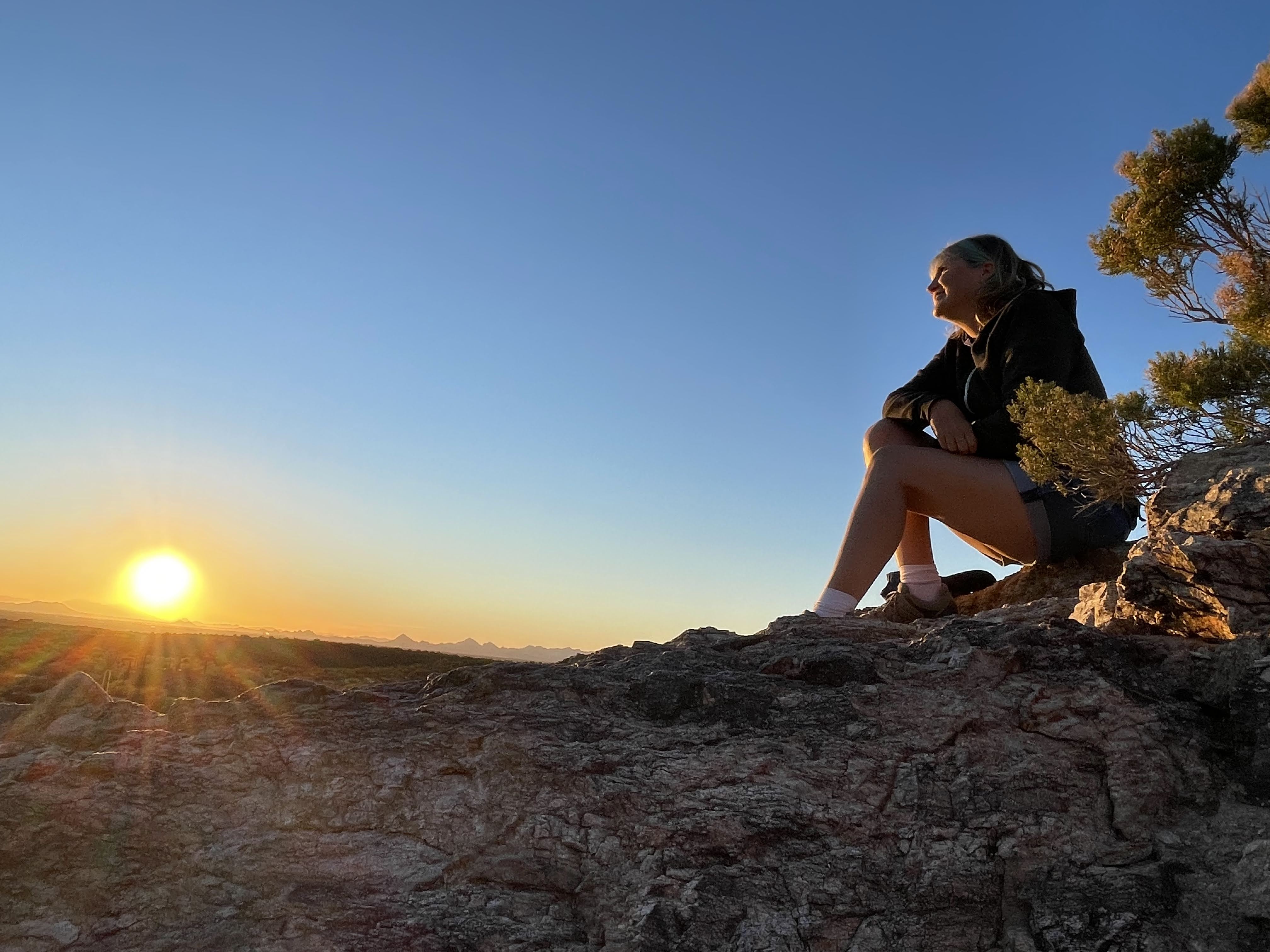Arizona
15 February 2022
We followed the original Rt 66 and our first stop in Arizona was at the Petrified Forest and Painted Desert National Park. We had to postpone it one day because we had another snow storm. Luckily it melted quickly and we were able to still see the natural wonders. The drive of the park began with stunning vistas of the painted desert. These badlands have stripes of multiple colors from all the different rocks and minerals in the soil that have been layered for generations. We were able to see the erosion forming the strange surface of the hills as the snow melted and ran off as mud. As we drove south, the badlands slowly gave way to the petrified forest. This area has one of the largest concentration of petrified wood in the World. The trees had been buried in mud millions of years ago and the lack of oxygen meant that they couldn’t decompose. Over time, minerals replaced the cells and now they are a collection of beautiful crystals in the shape of the original tree. It is amazing that we can often still see the bark and tree rings even though they are fully stone. I love the chemistry of this process.
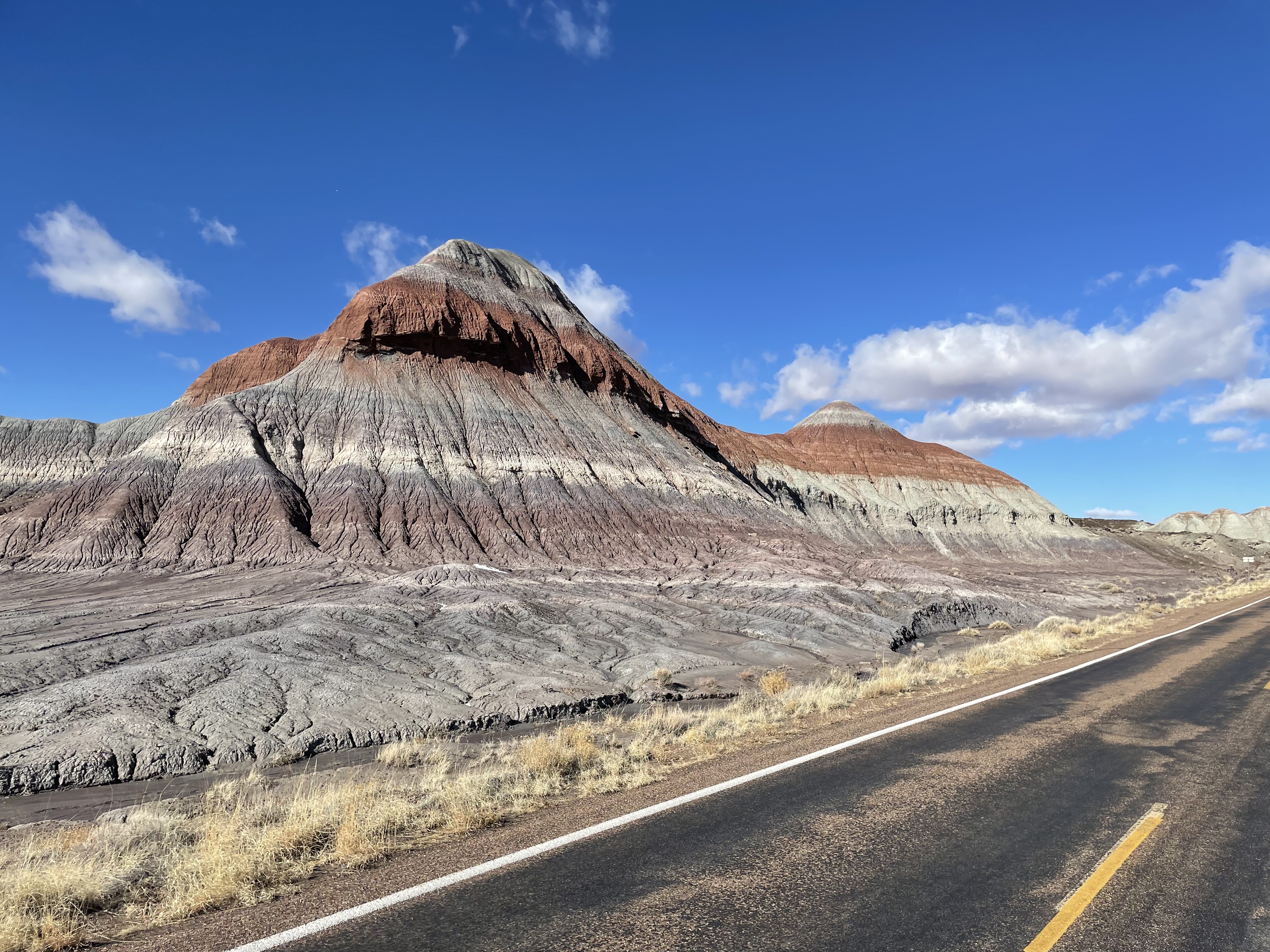
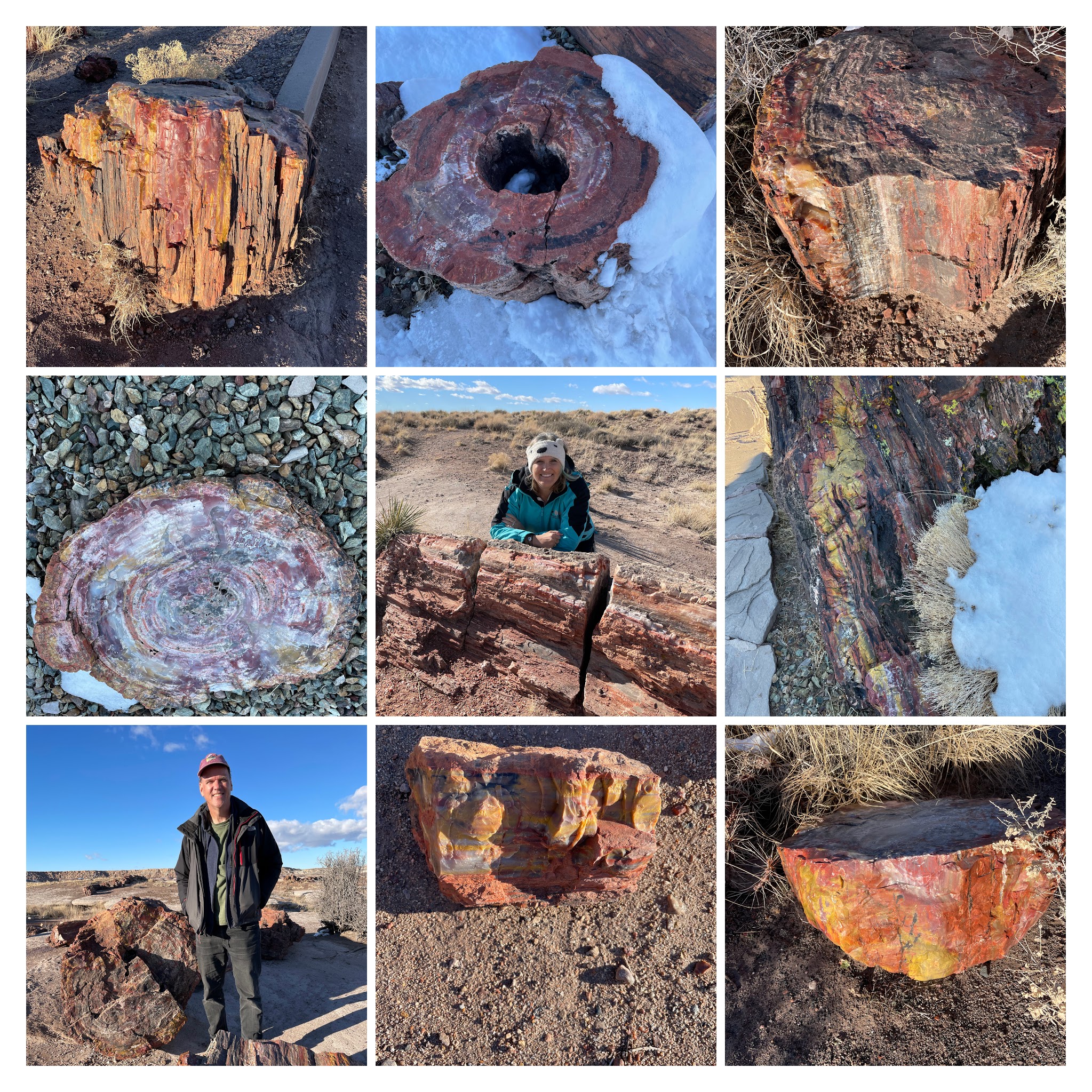
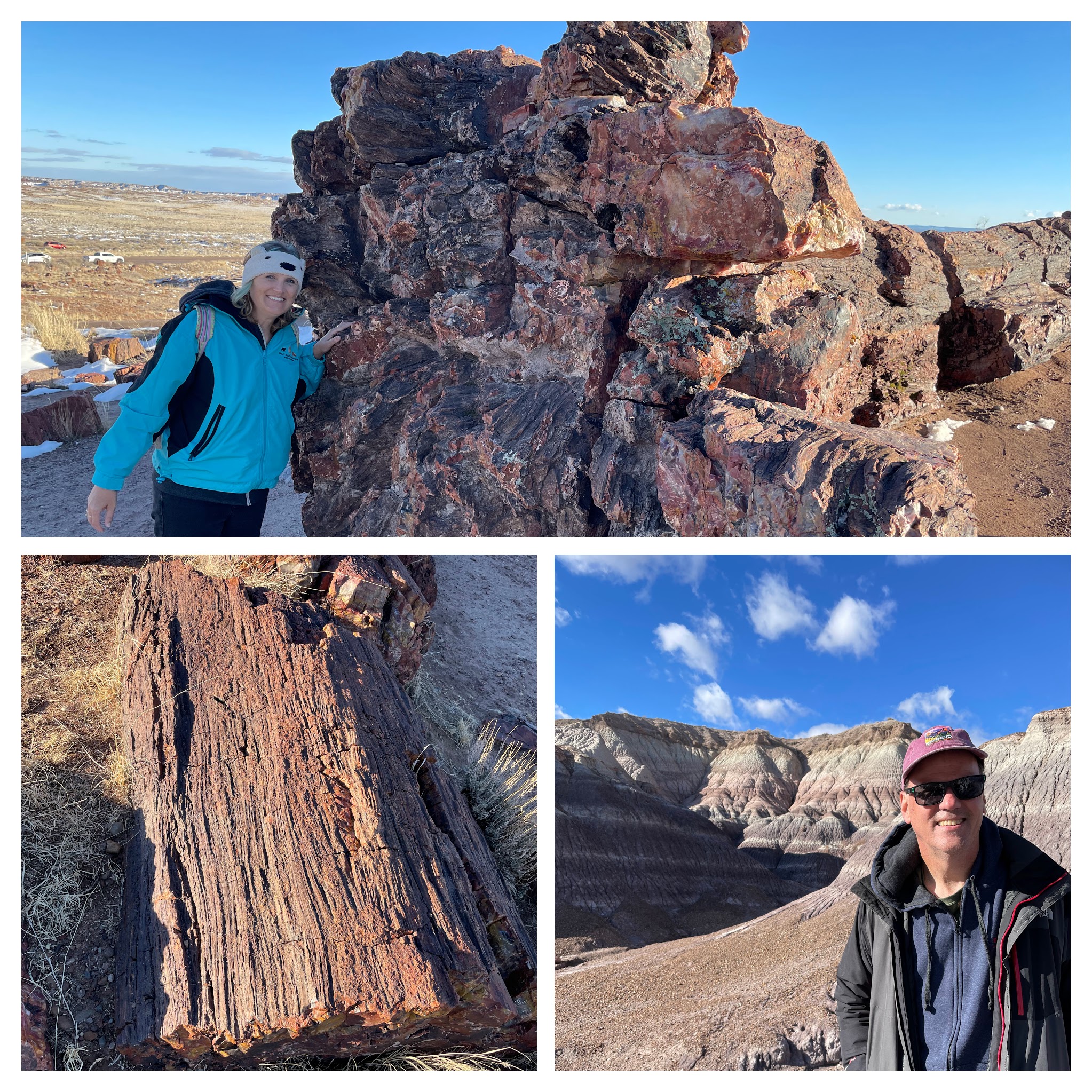
On the way to our next location, we took a 10 minute detour to see the world’s best preserved meteorite impact crater. 50 football fields could lay in the bottom of this celestial wonder. It wasn’t until the 1960’s that scientists finally understood that this had been caused by a meteorite. Once they knew what to look for they started to find impact craters around the world - including in the Gulf of Mexico which ultimately led to the current theory that an asteroid impact killed off the dinosaurs.

Another interesting visit of scientific note was when we visited Lake Montezuma, a small lake near thousand-year-old dwellings of native americans. This lake is fed by an underground spring, and is a unique ecosystem. Levels of carbon dioxide 80 times higher than most lakes make it impossible for fish to live there, but there are five species that are found nowhere else on earth because they had to evolve to this environment. It is filled with leeches, which are the primary predator, but they have evolved to not suck blood because nothing in the lake has blood. They eat mostly shrimplike amphipods, and occasionally snails and water scorpions.
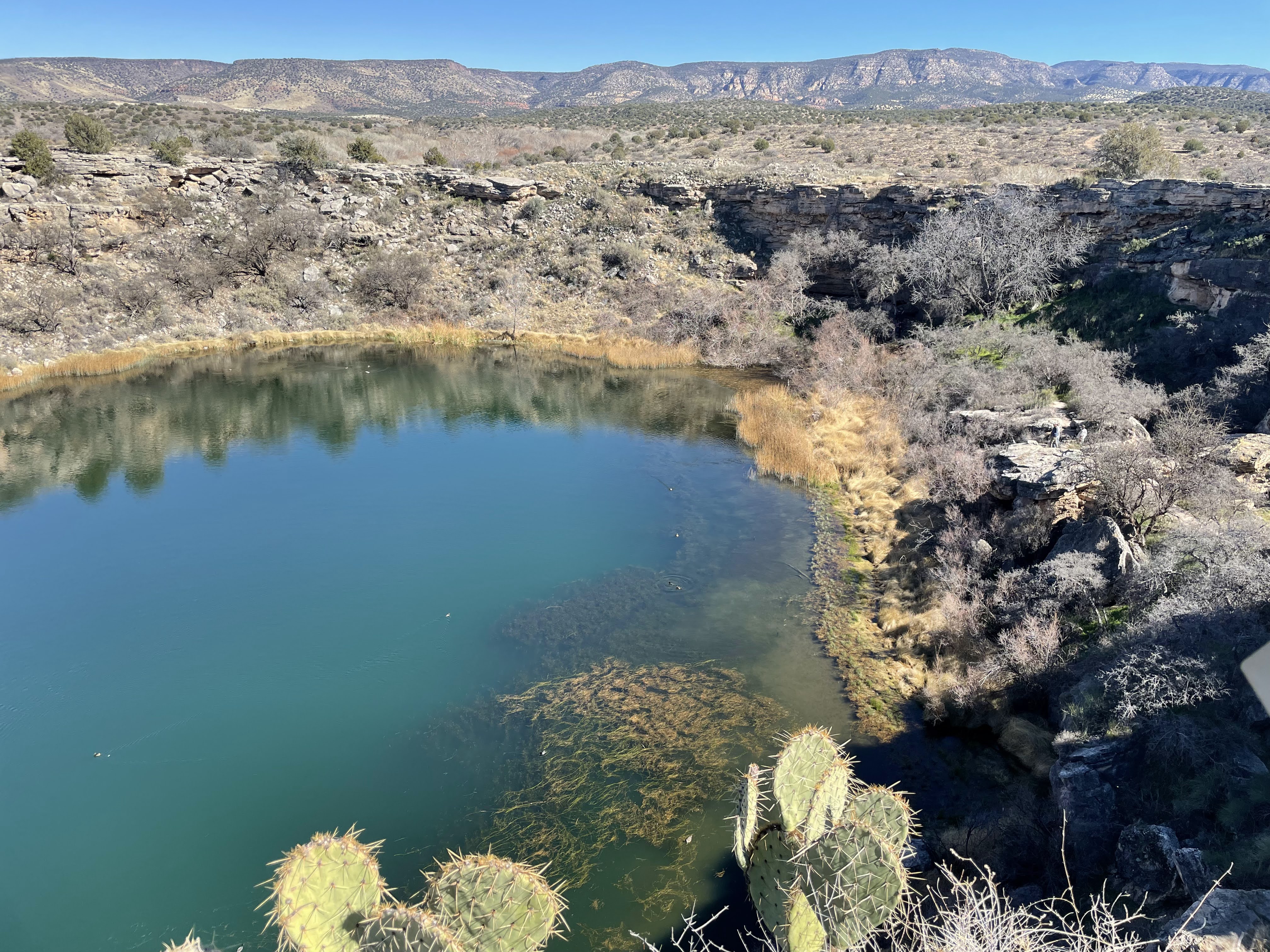
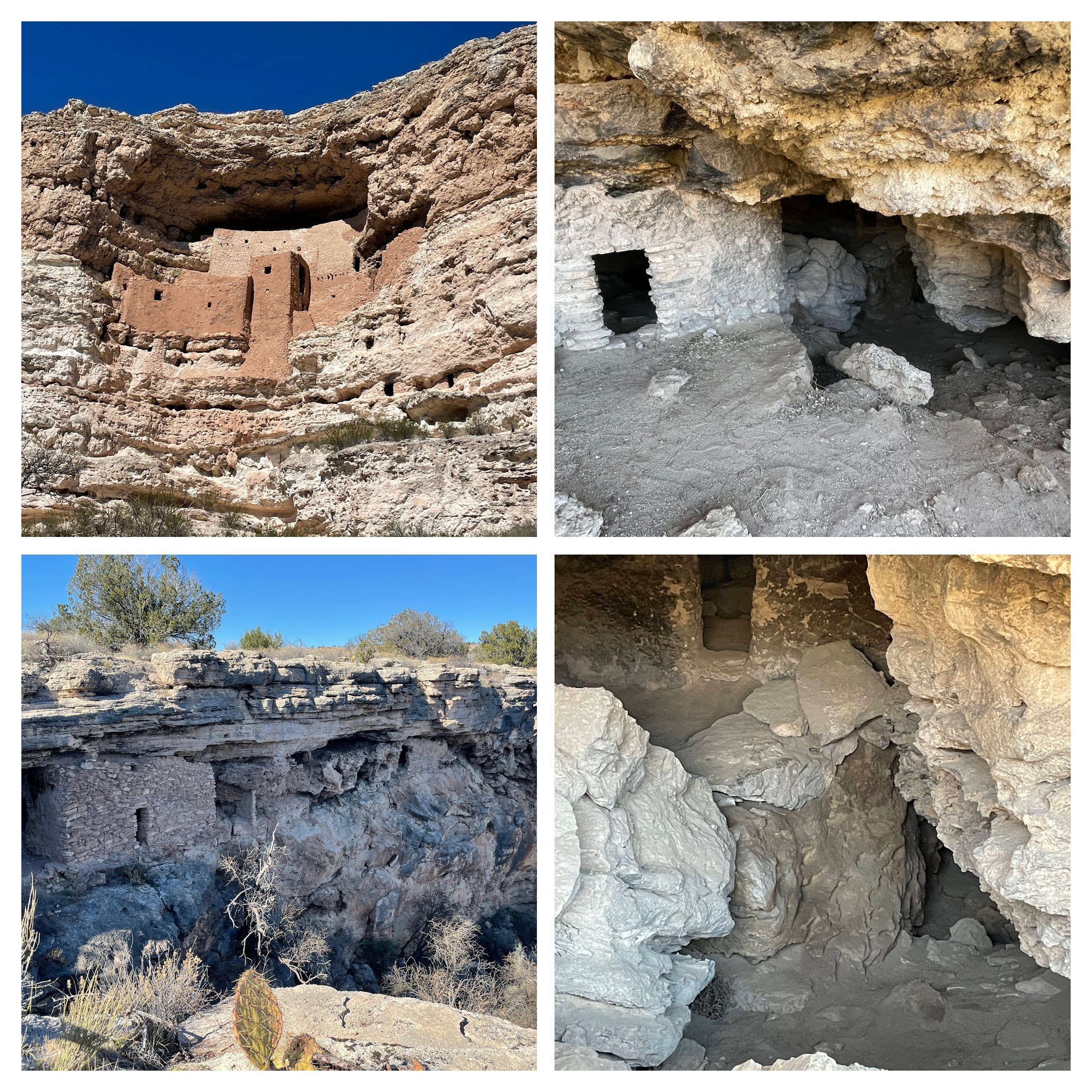
We spent a day in Sedona. It was VERY crowded, and parking near a trailhead was impossible. Even so, we marveled at the stunning red rock formations and took a trolley tour of the town where we were shown the houses of Madonna and Oprah, learned about the energy vortexes that draw new agers, and heard rumors about aliens and government cover ups. While the mysticism is not really our thing, we found the area to be beautiful and bought some unique native american artwork.
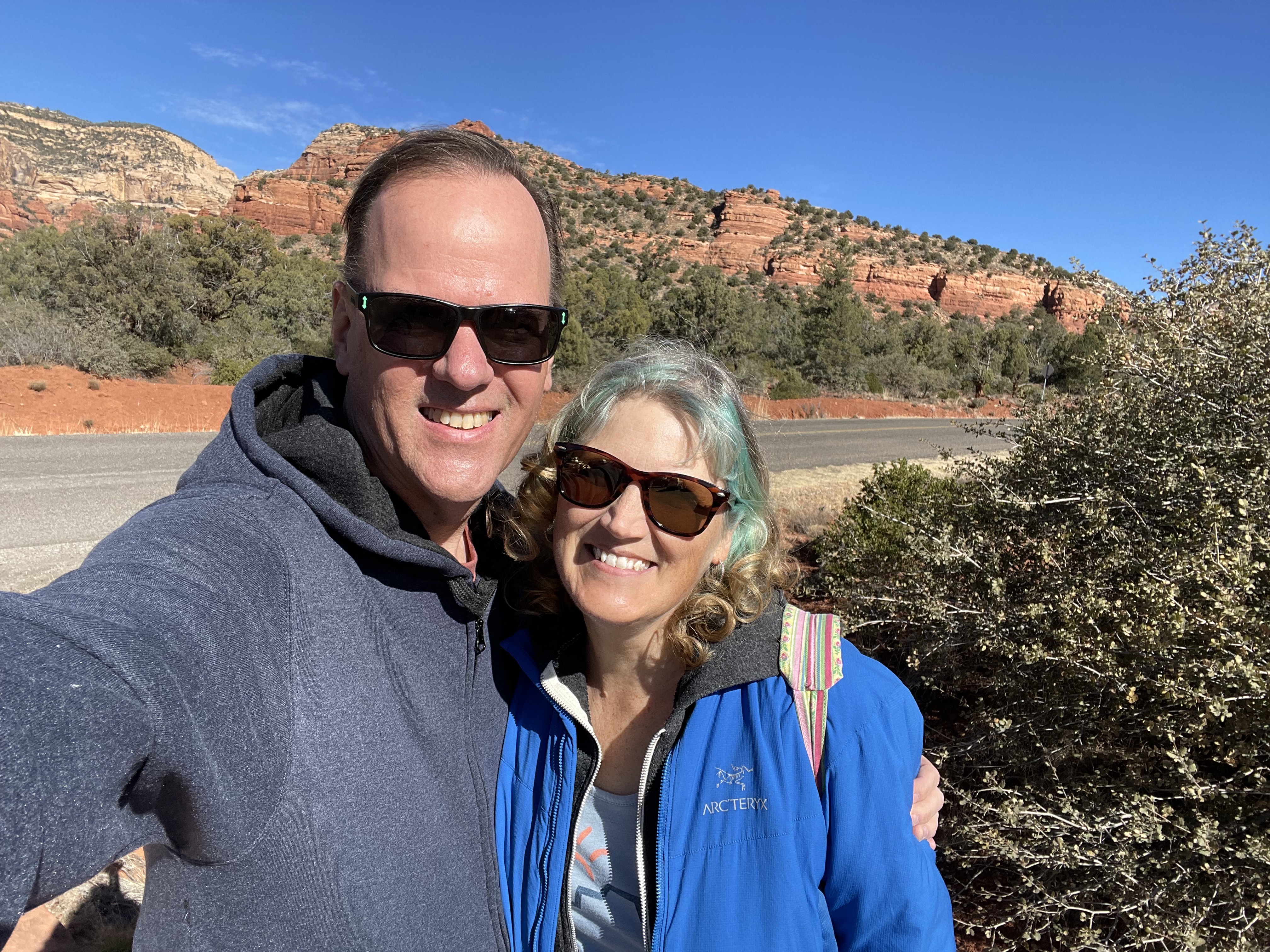
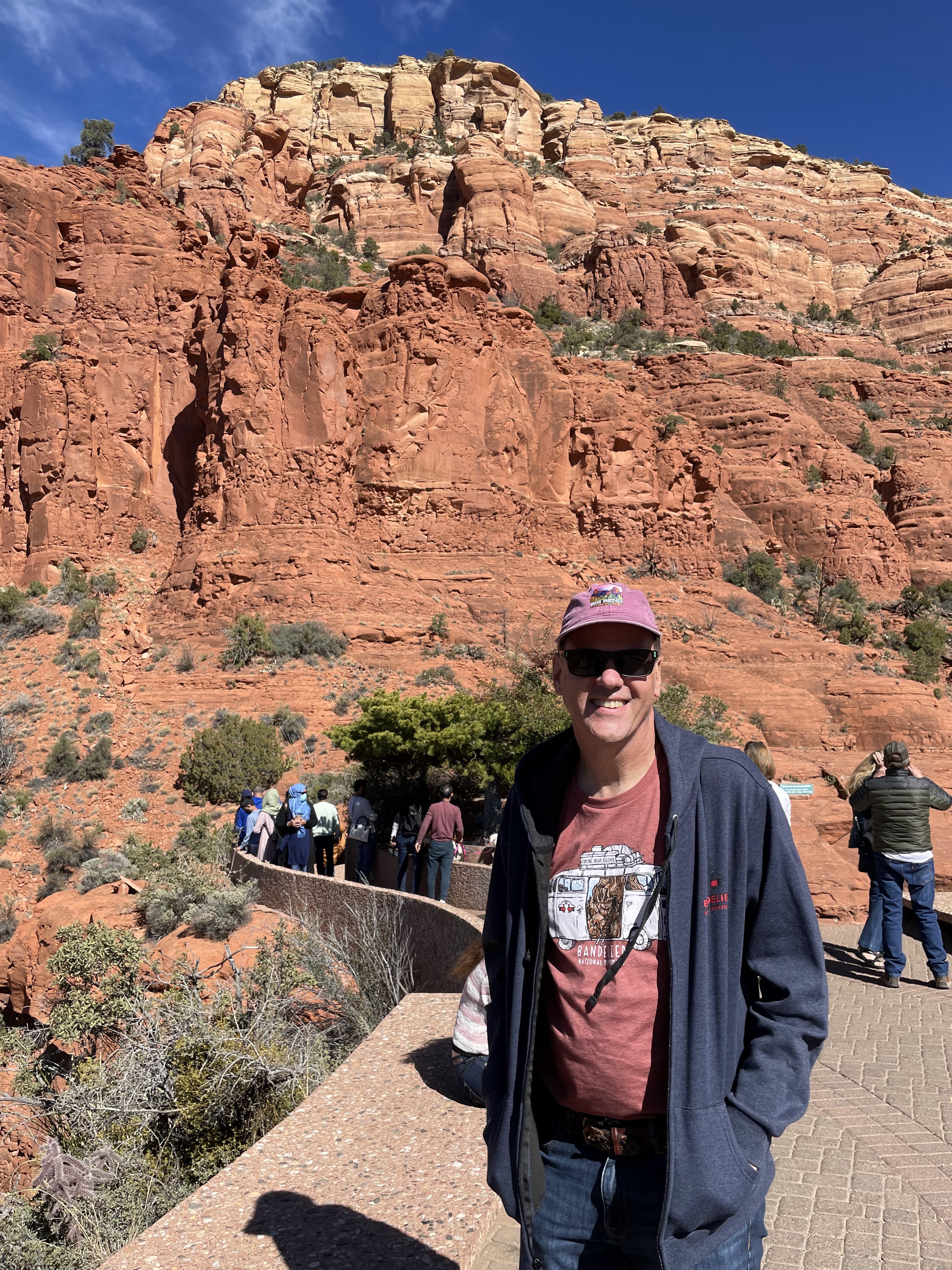
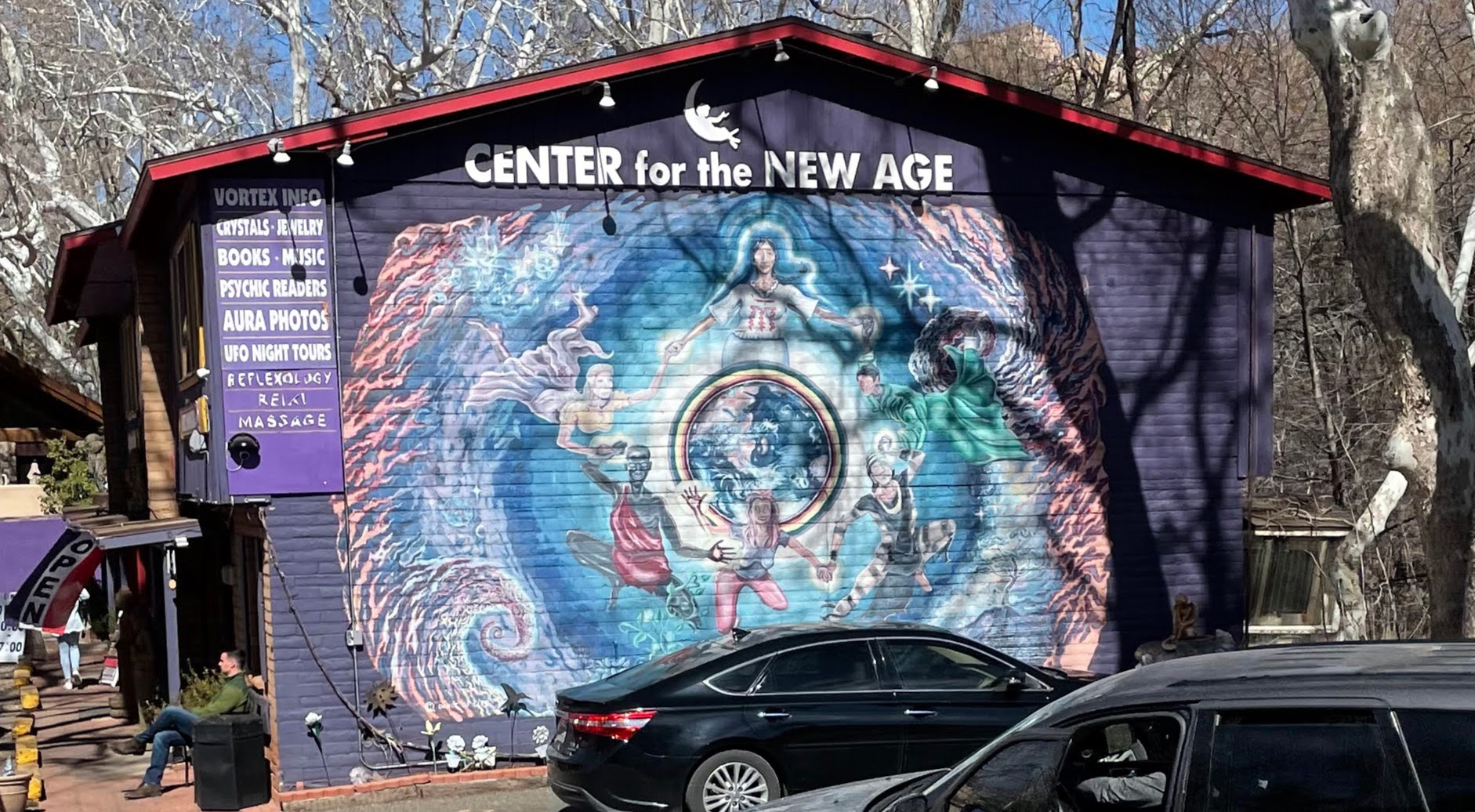
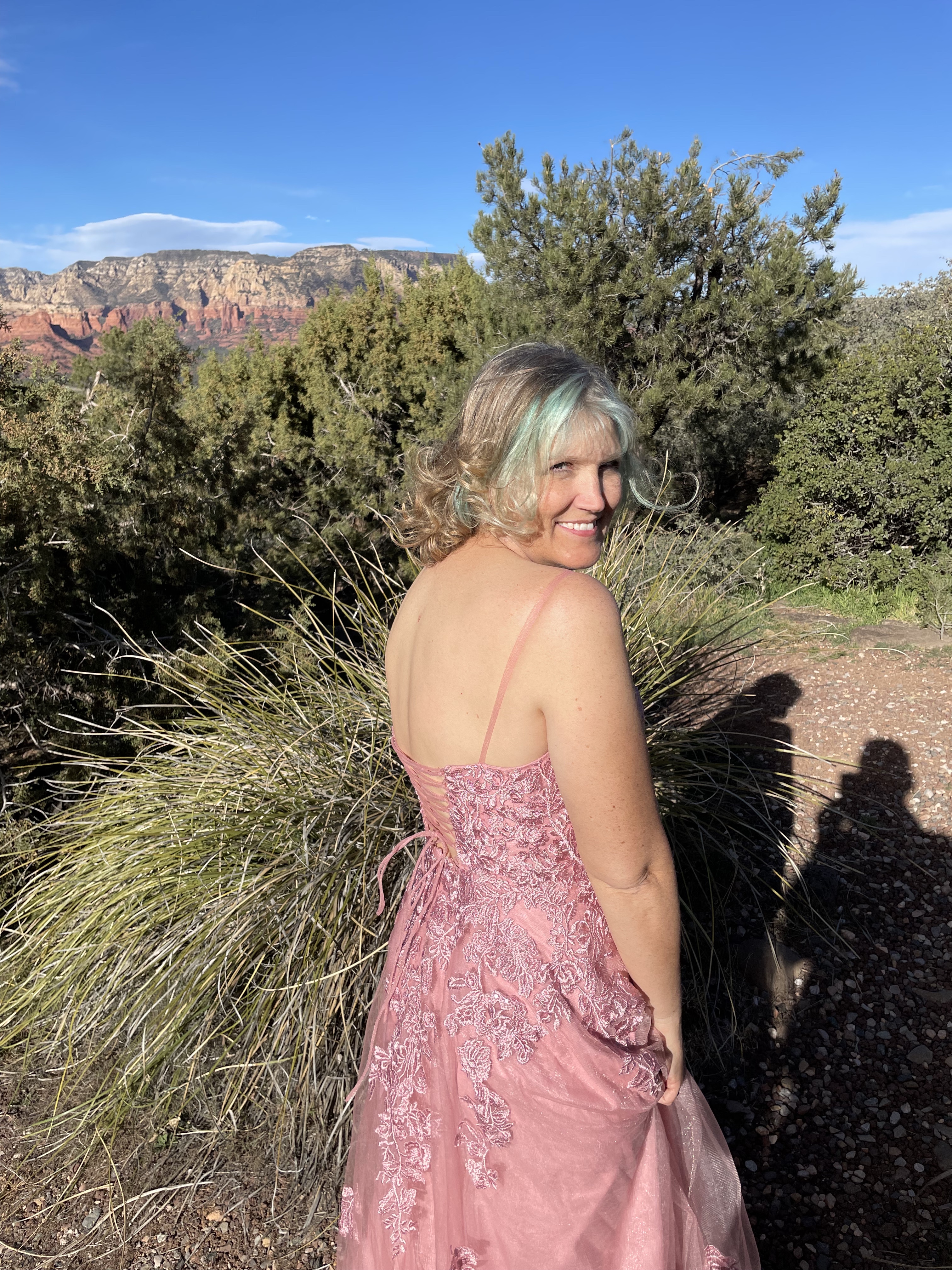
Jerome Arizona was once the site of a billion dollar copper mine. At one point the town had 15,000 people. Then the copper was all dug out and it became a ghost town of 100 people. Now, the 500 people who live there are mostly supported by tourism. We were fascinated by the mines, including looking down a 1900 foot deep access shaft. The blasting of the mining tunnels caused numerous earth shifts on the mountain and the town perched on the side of the steep slope repeatedly had buildings slide down. The museum had a fascinating explanation of how the copper is removed and refined.
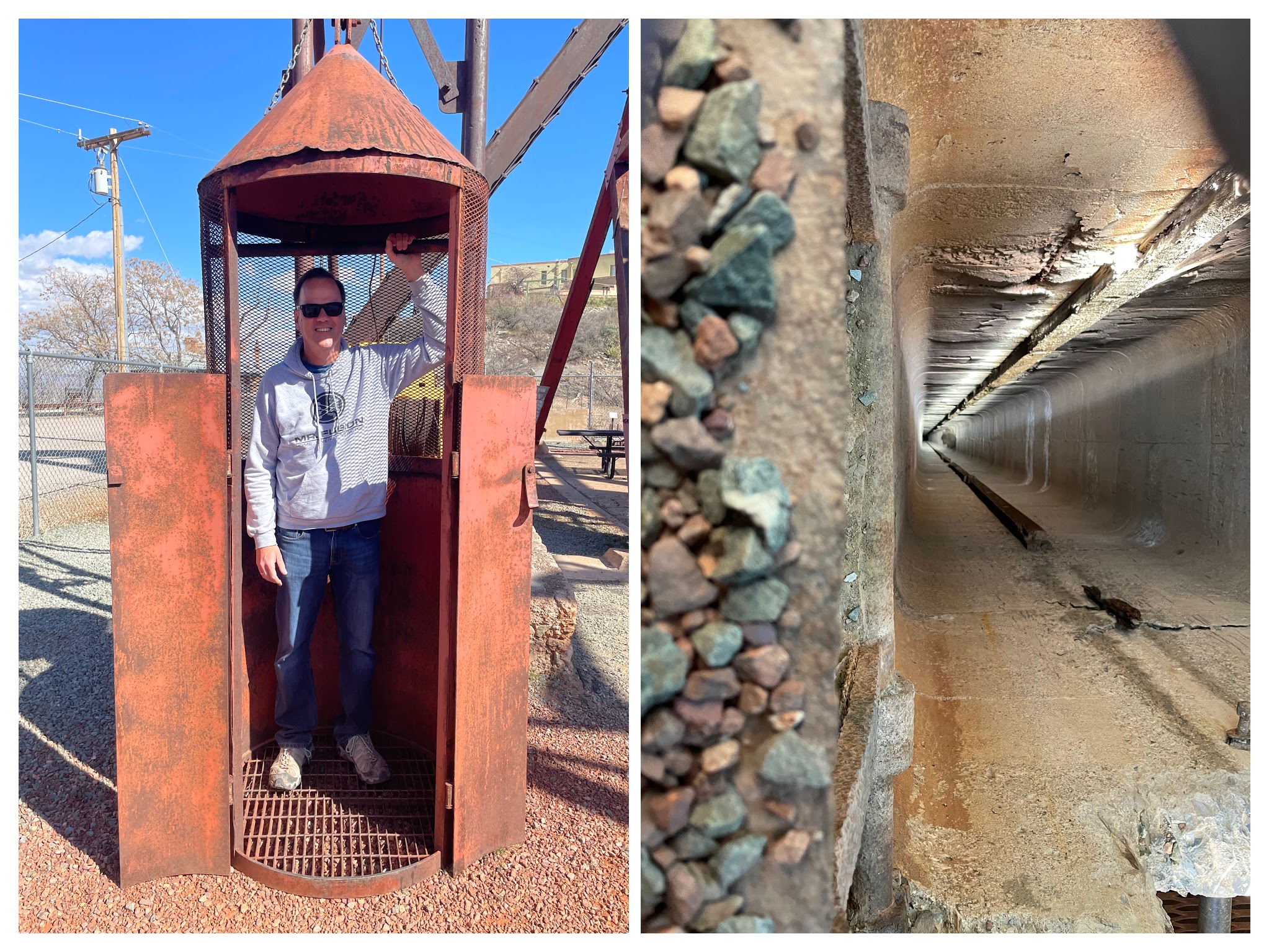
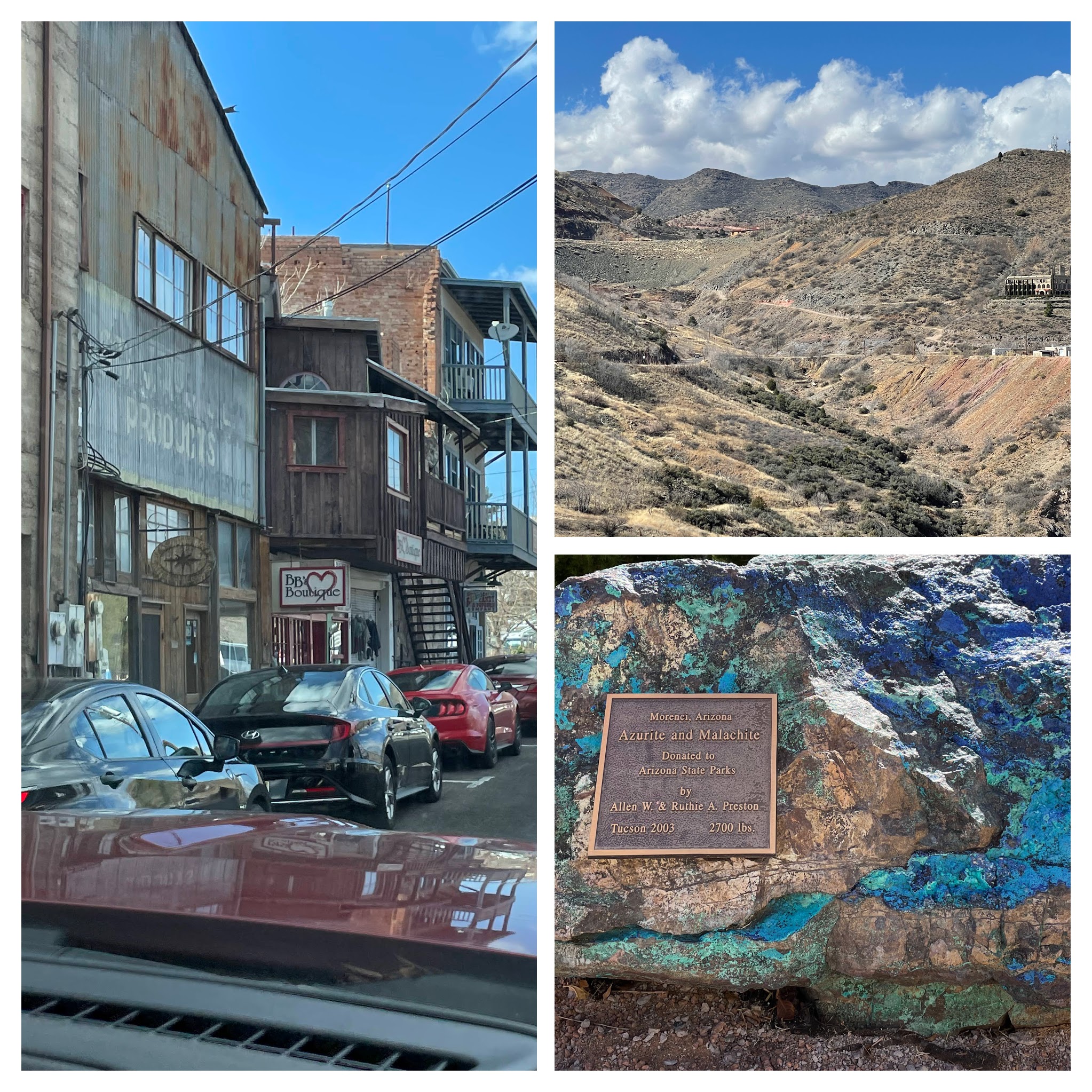
This model in the museum shows where the copper deposits were located under the town:
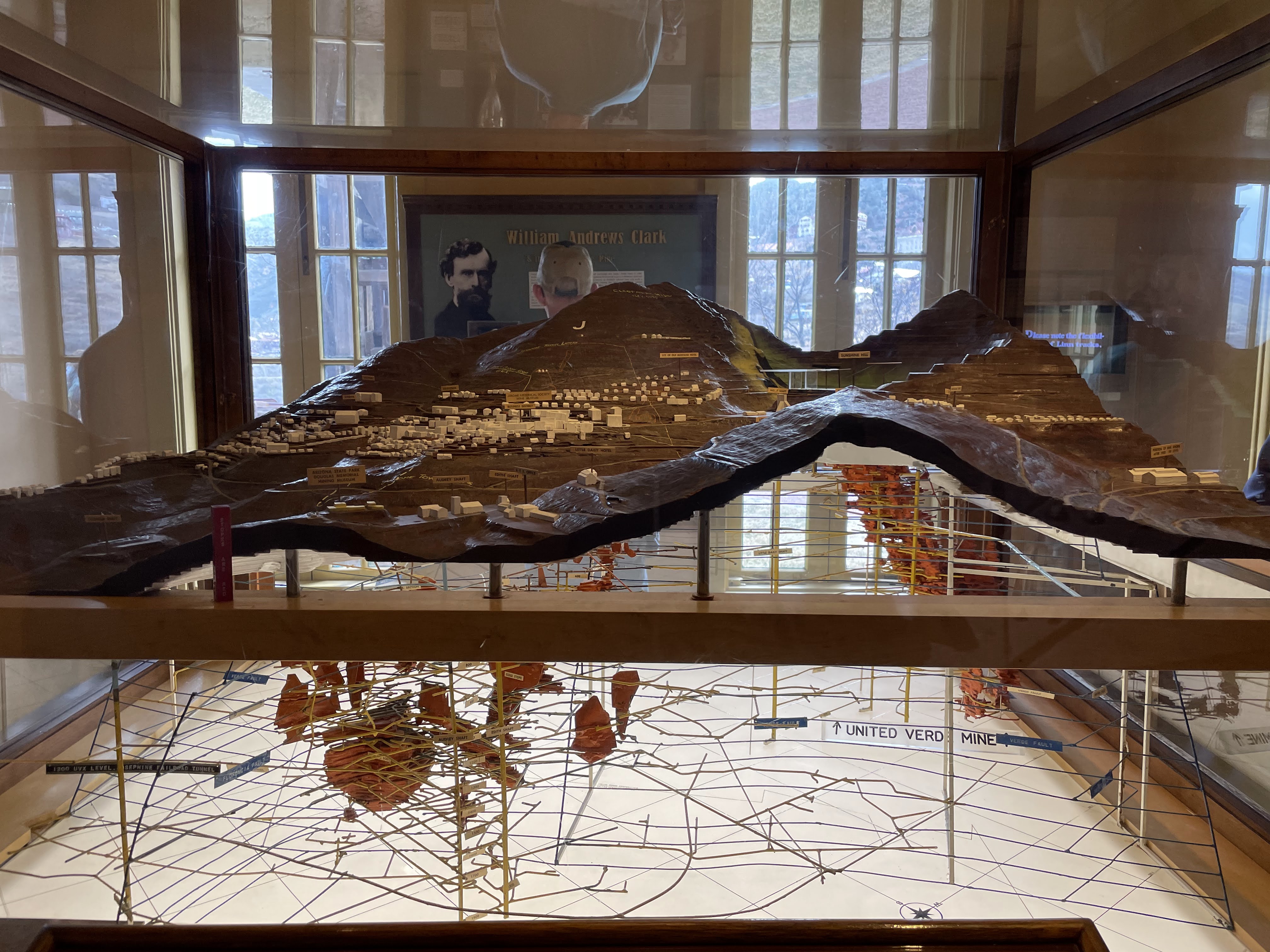
Our drive to Tucson was harrowing when we hit blizzard conditions on the steep, narrow highway. We were not sure if we should stop and wait it out for hours and perhaps get stuck in the snow or risk sliding on ice with our RV. Ken drove very slowly and we had no trouble, but over the five hour drive we passed 5 separate accidents including one overturned truck, and three multi car crashes with spin outs!
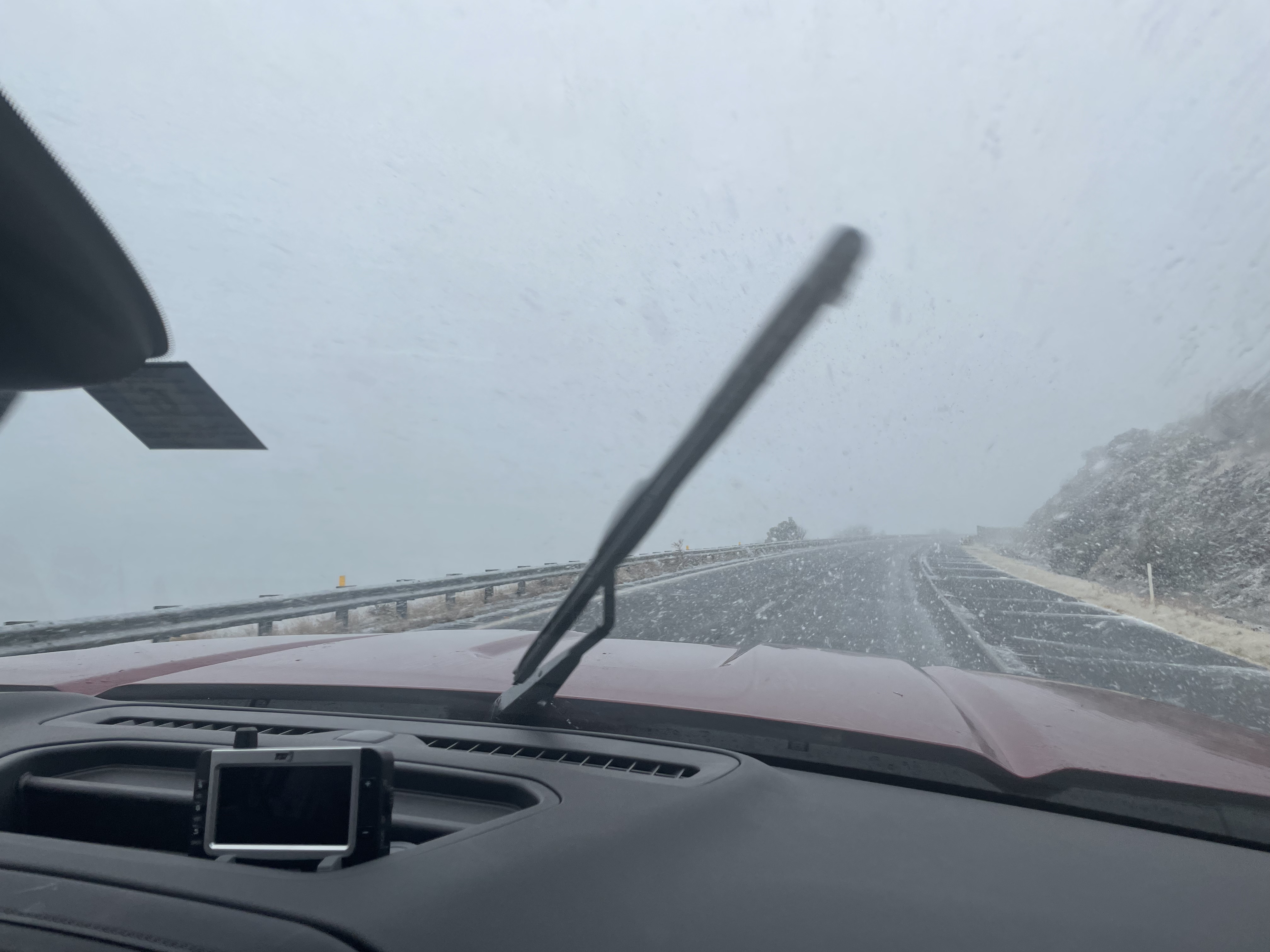
On our first day in Tucson we drove to Biosphere II. This 3+ acre fully-enclosed living habitat was the site of the experiment in the 1990’s where 8 people lived for two years, with the goal of being completely sealed off from the outside. They produced enough food (barely - in the first year they lost about 20% of their body weight) and recycled air to keep themselves and the ecosystem alive (though they did have to add oxygen at one point). In addition to surviving, they did tests in the 7 different ecosystems contained in the enclosure. It is now run by the University of Arizona and scientists can use the system to do experiments that can’t be done anywhere else on this scale. We were able to walk through the complex and found it fascinating. The ocean ecosystem has already given excellent data on the effects of increasing CO2 levels on coral reefs. New research includes the effect of increased temperature on the ocean and a study of what happens to water once it goes under the ground.
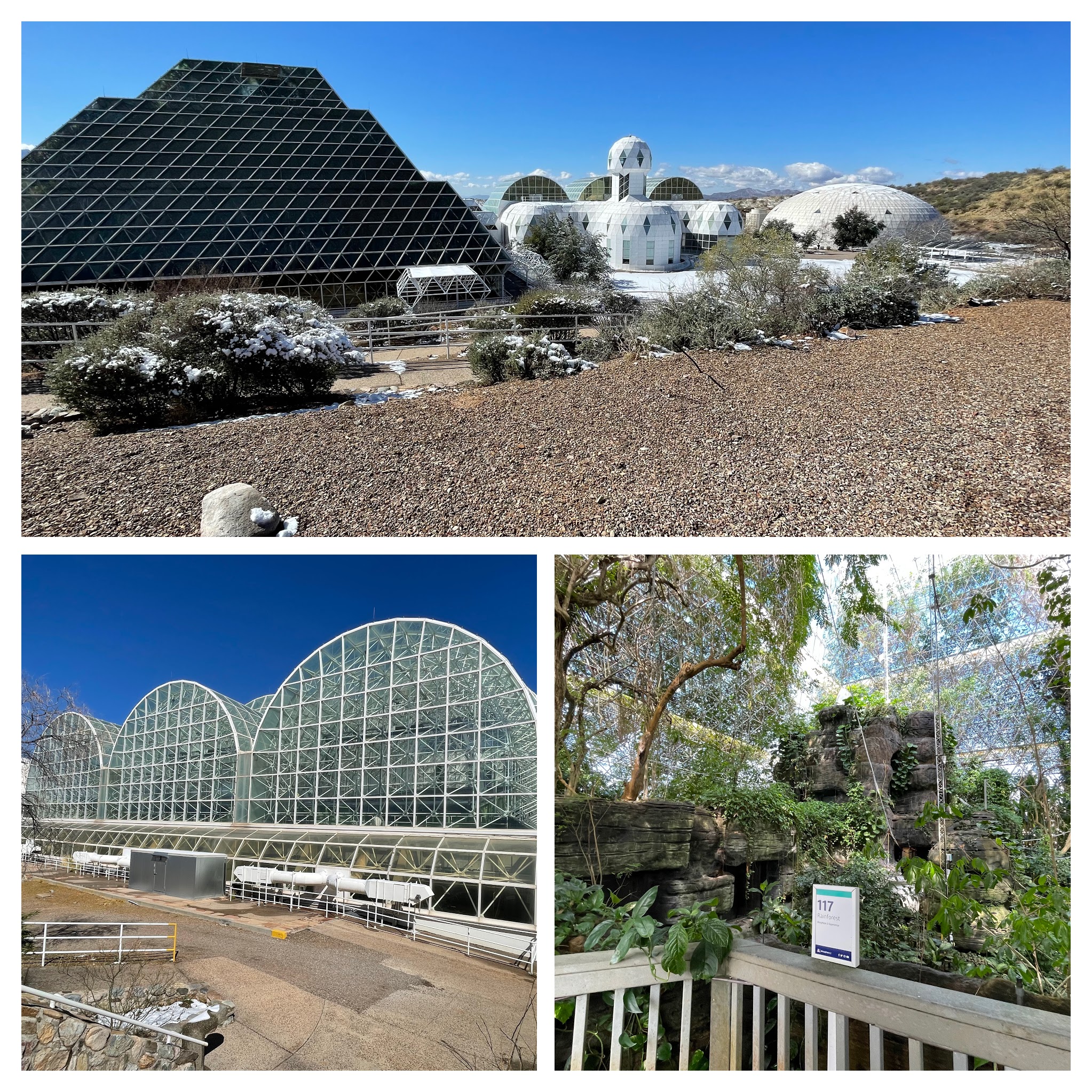
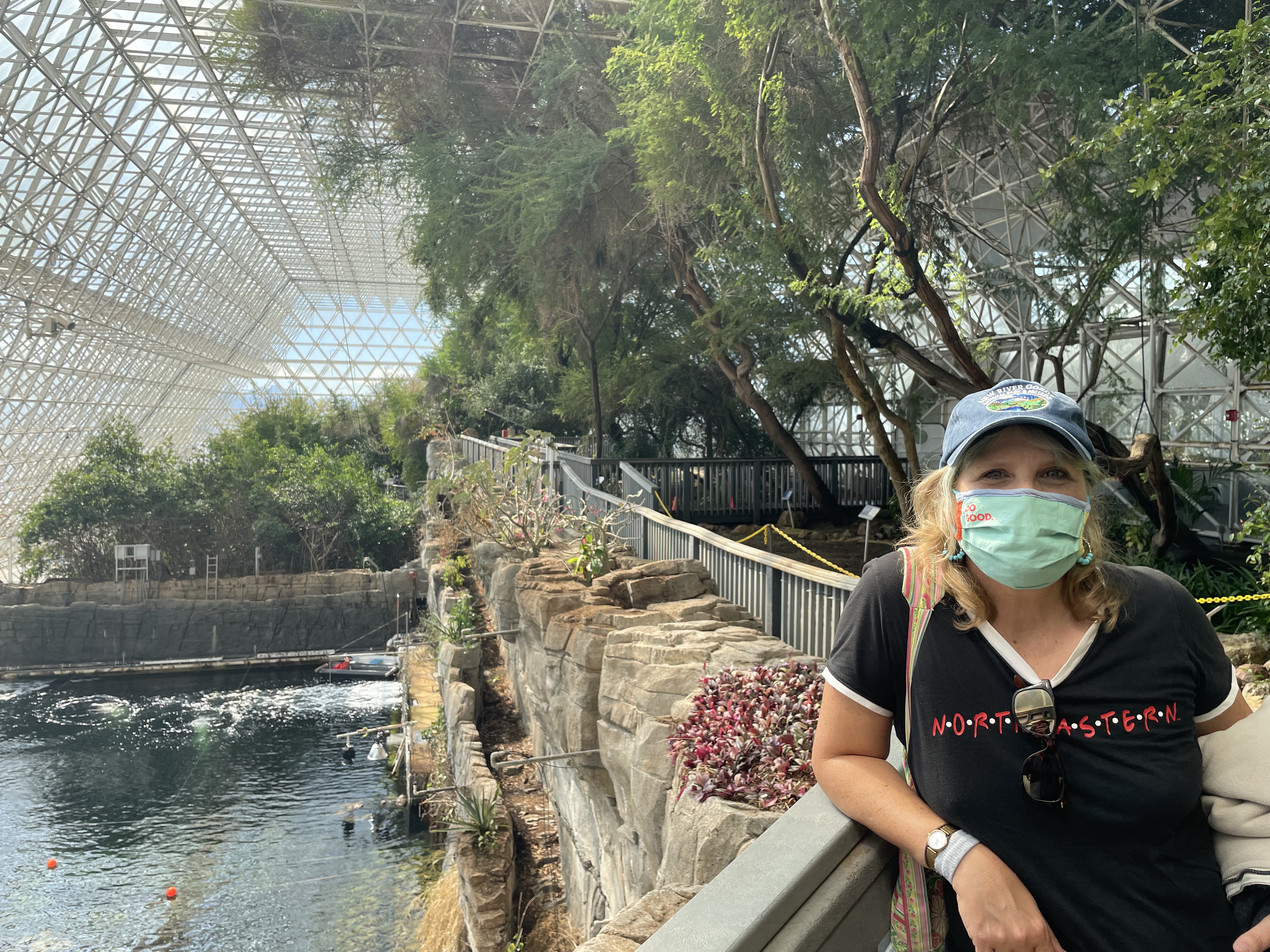
Jerusha’s sister, Rebecca, flew out and joined us for two days during which we visited Saguaro National Park. It was wonderful to have her join us- but the visit was too short! The Saguaro cactus is the stereotypical cactus shape, but it is primarily found in only this area. They grow at an inch per year and don’t grow arms until they are at least 75 years old. Some of these were really tall and really old. The park was filled with multiple types of cactus - my favorite was the “teddy bear cactus” (but you don’t want to snuggle it!) One of the things we have really enjoyed on this trip is seeing plants and landscapes so very different from where we live.

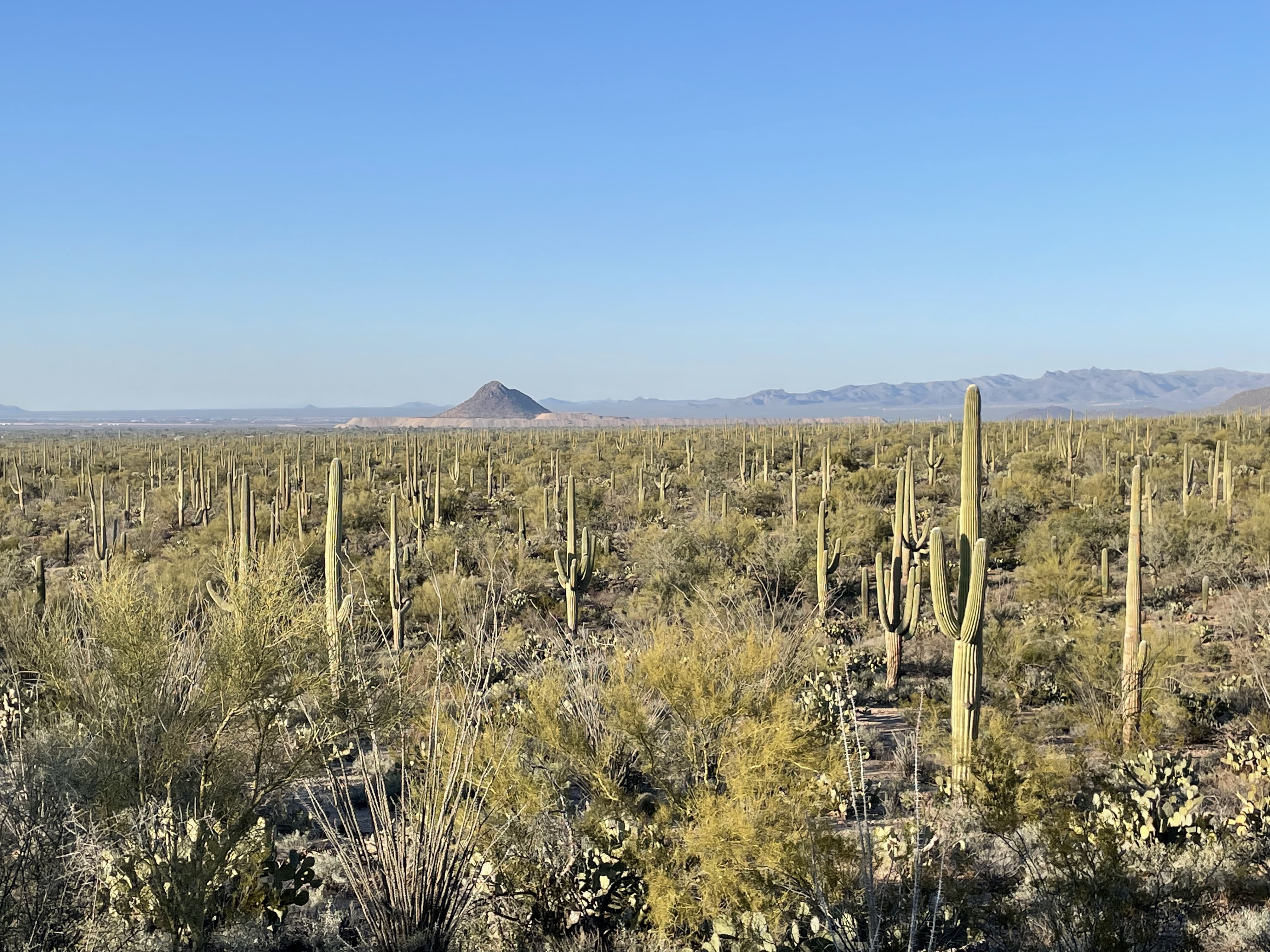
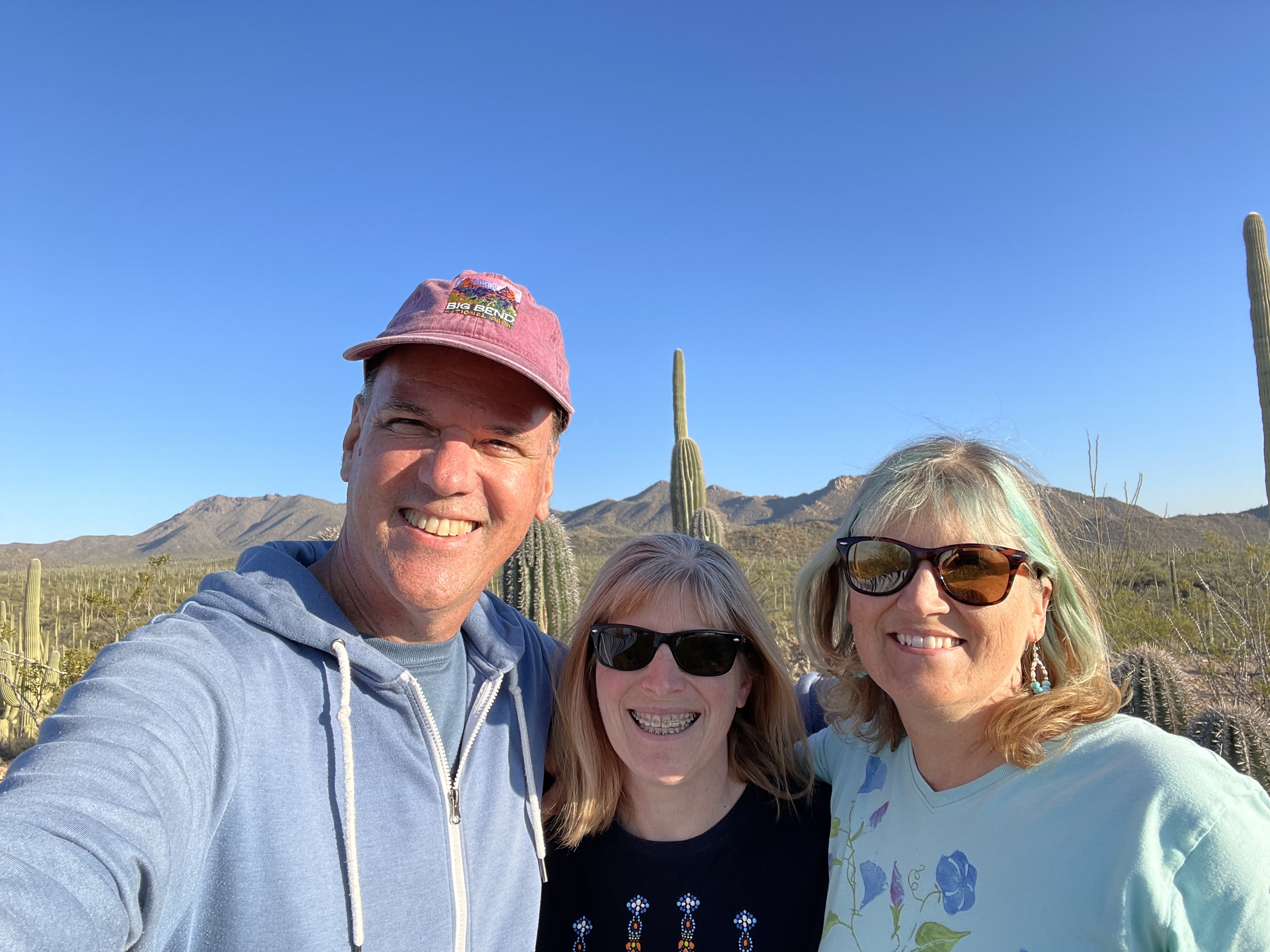

We also visited The Desert Museum where thousands of plants of this climate were displayed. The cactus gardens and the agave gardens were our favorites. I had no idea there were so many varieties!! We were just at the start of the blooming season so we got to see a few of the cactus flowers as well!! The best part of the visit there however, was the roadrunner. This bird had a mouse and it was so proud of it. He kept running towards visitors to show off his mouse. When he noticed us looking at us, he puffed up his crown and posed. We watched for 15 minutes and he was still doing it when we left.
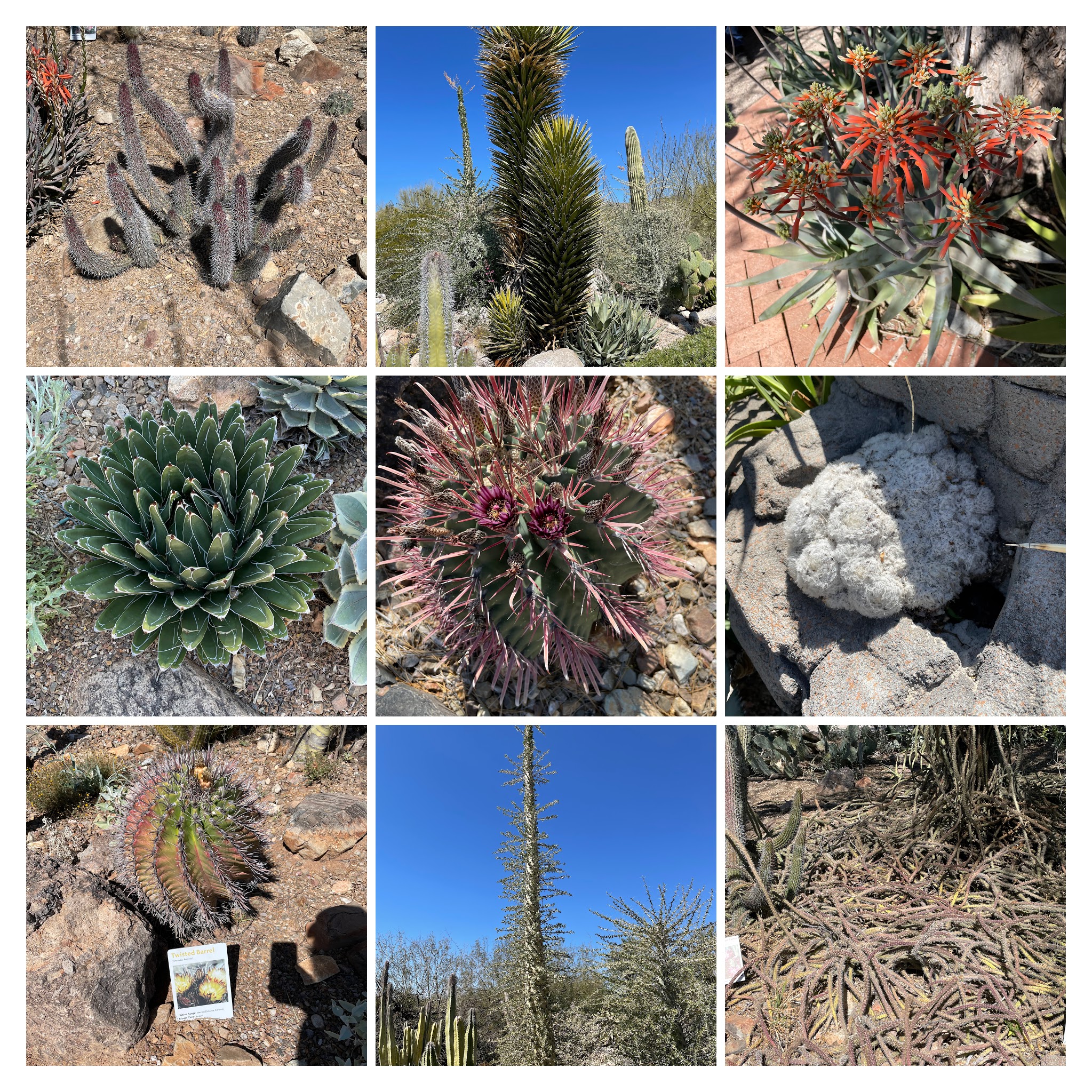
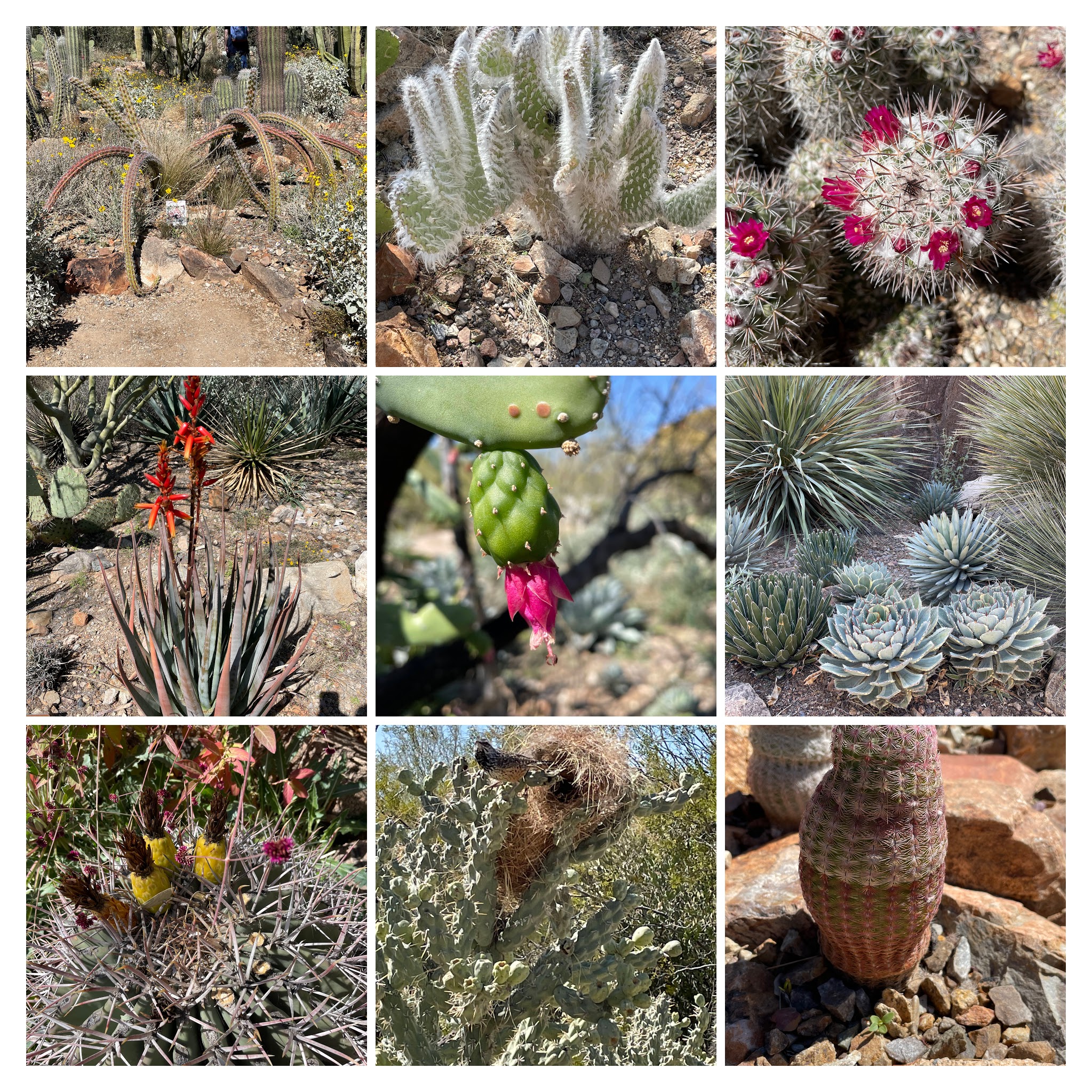
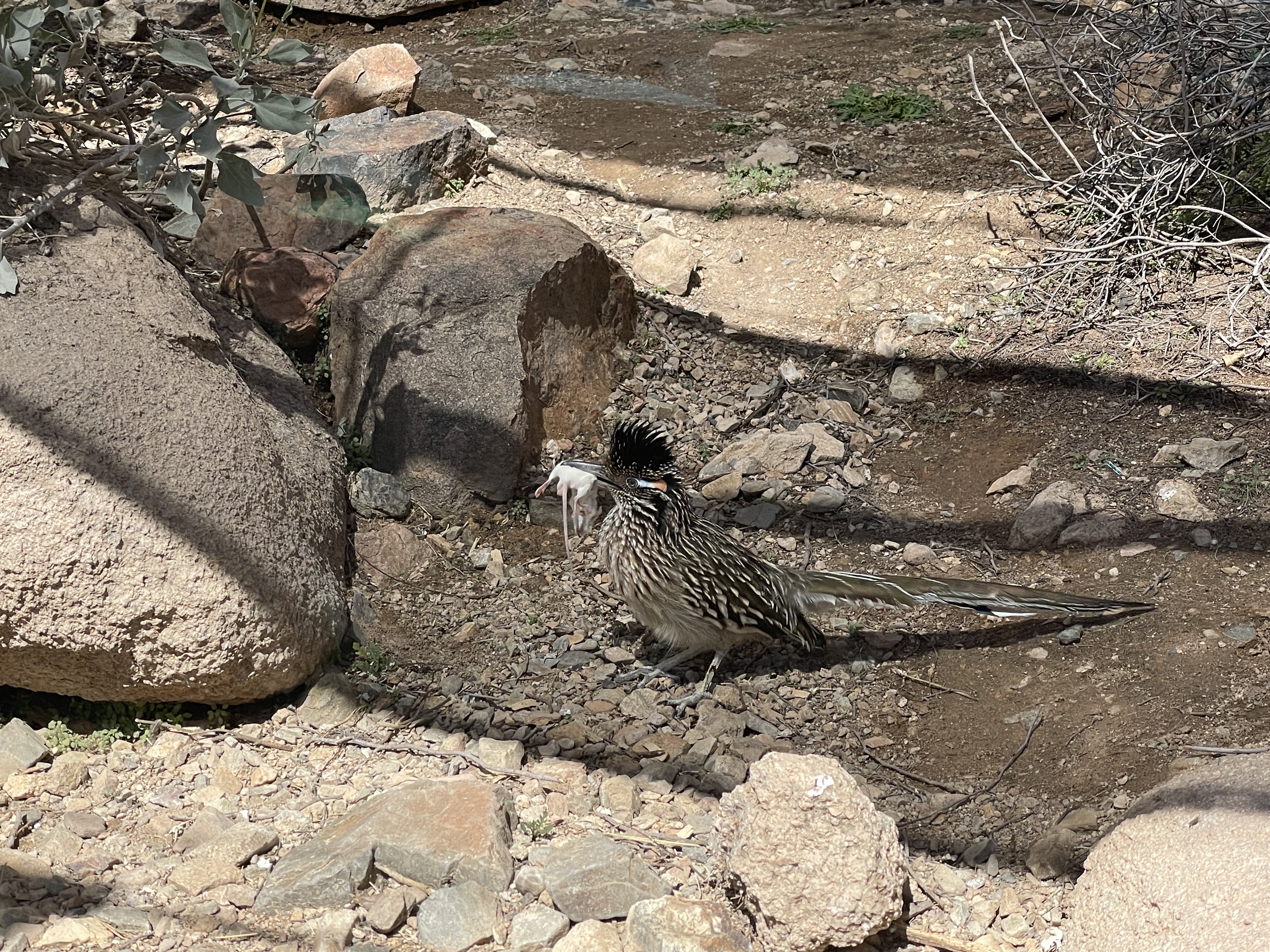
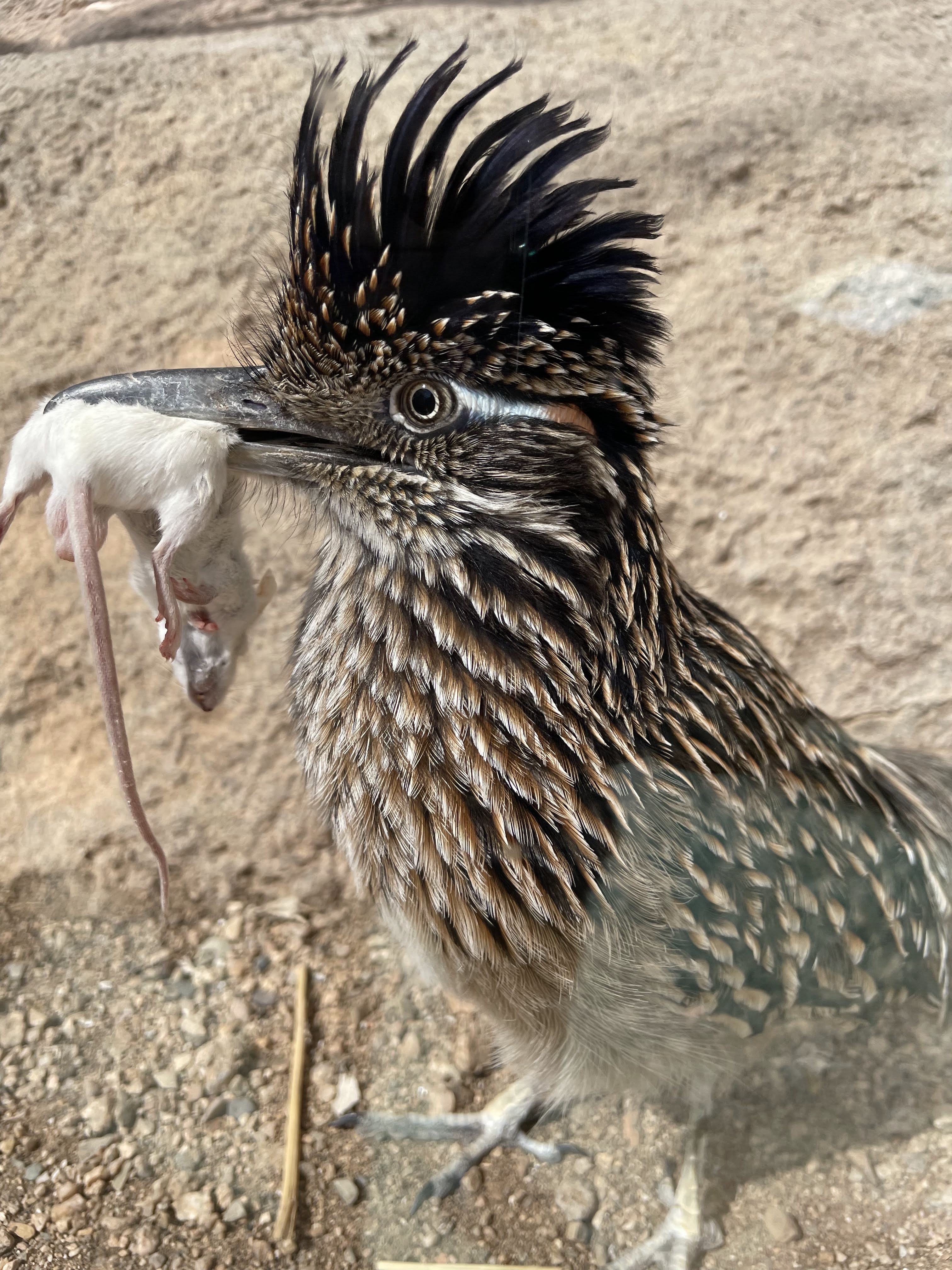
Our stay in AZ was wonderful. Now onto sunny California and hopefully the end of snow on this trip.
